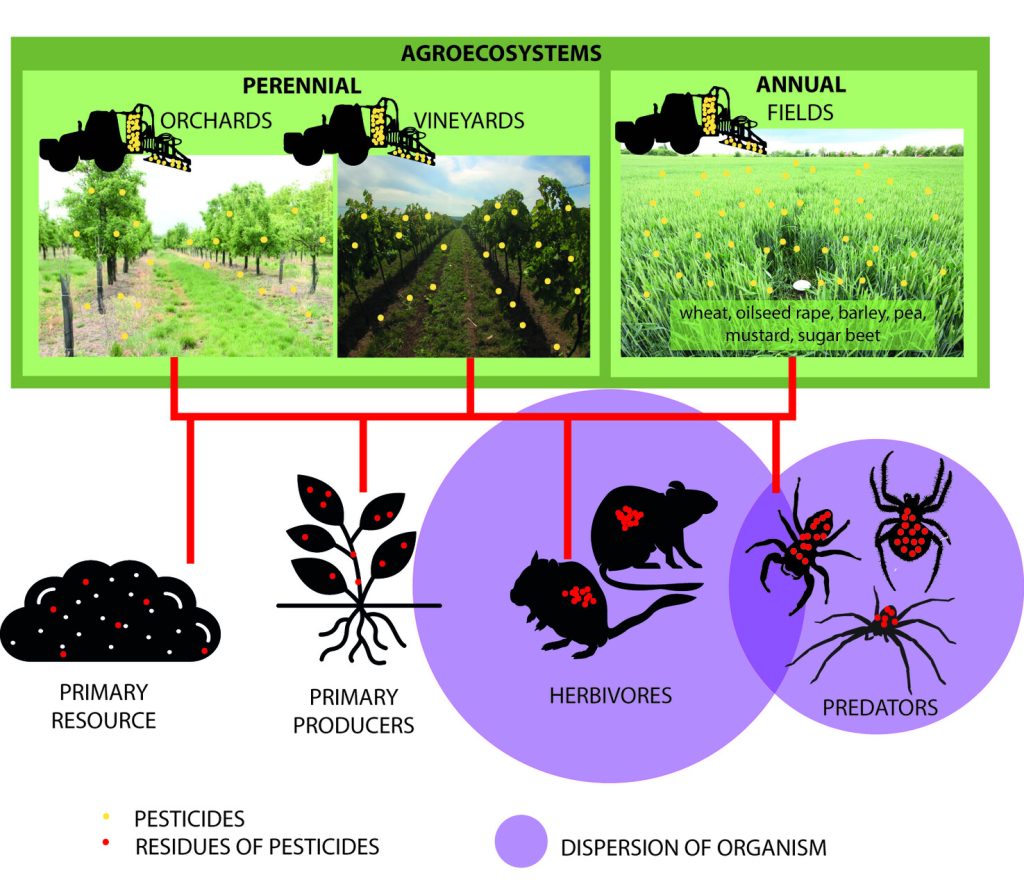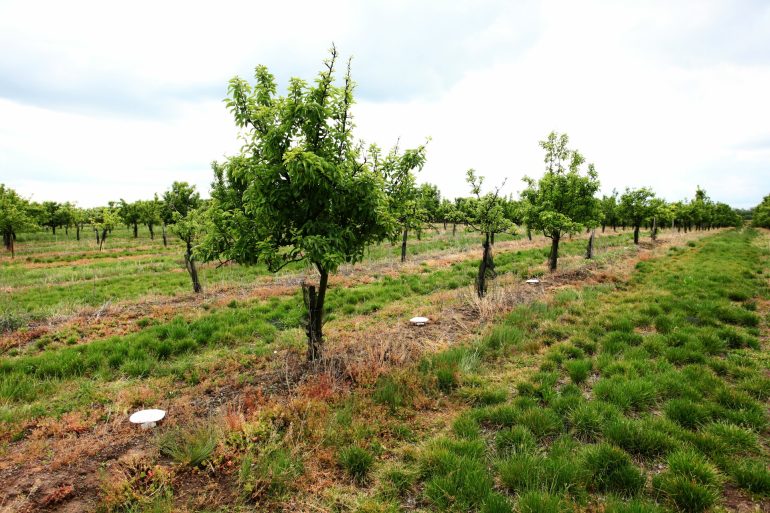Scientists from the Mendel University Faculty of Forestry and Woodwork (LDF MENDELU) have discovered an alarming presence of pesticide substances that have never been approved for use in agriculture and forestry or have been classified as prohibited substances in the European Union for several years. The findings emerged from a two-year study on the spread of pesticides in the food webs of various types of crops grown in South Moravia and Central Bohemia, in collaboration with the Research Institute of Organic Syntheses and Masaryk University’s Research Centre for Toxic Compounds in the Environment (RECETOX).
RECETOX is particularly focused on research and education in the field of managing environmental and health risks associated with the chemical substances that are close to the population in everyday life.
The highest diversity and concentration of residual substances were found in populations of predators, specifically spiders. Conversely, the lowest amount was detected in soils.
Thanks to the close cooperation with the authorities in the South Moravian and Central Bohemian regions, scientists were able to compare the substances they discovered in the relevant groups – soil, plants, rodents, and spiders – with the substances that have been applied in the affected locations over the last four years.
The findings led to two hypotheses: farmers kept using these substances illegally without registering their use, or their persistence is explained by their long-lasting duration. The truth could also be a combination of both: “The occurrence of these substances can be explained by their ability to persist in the environment for a long time, but we cannot rule out the possible illegal application and use of falsified agrochemicals either. But here we are getting into the realm of speculation,” explained Ondřej Košulič, a researcher at the Institute of Forest Protection and Hunting at LDF MENDELU.
One of the most hazardous substances is carbofuran and its metabolites, which are poisonous and can prove lethal to vertebrates, and were detected in rodents and spiders on most cultivated perennial and annual crops during the two-year sample collection. “In the Czech Republic, there are deaths of birds of prey caused by carbofurans every year, often caused by direct ingestion of these substances through poisoned prey,” said Košulič.

Other dangerous residues found during the surveys included the highly toxic insecticide methoxychlor, which has been banned in Europe since 2002. “This substance is known for its bioaccumulation and persistence in ecosystems with significant negative effects on non-target organisms such as beneficial insects and various groups of vertebrates. The fungicide pyrametostrobin, which has never been registered for the European plant protection product market, was also detected at a very high level. This finding also suggests that these substances may be illegally imported and sold from countries where they are commonly used as a strobilurin fungicide to fight fungal diseases,” added Radek Michalko from the Institute of Forest Ecology.
The researchers pointed out the need to reduce the risk of substances that can harm non-target species and seriously endanger the environment, concerning sustainability and human health itself.
The project will now be followed up by RECETOX, while the results have already been published in the specialist journal “Agronomy for Sustainable Development”.
The full paper, written in English, is available through open access here.







